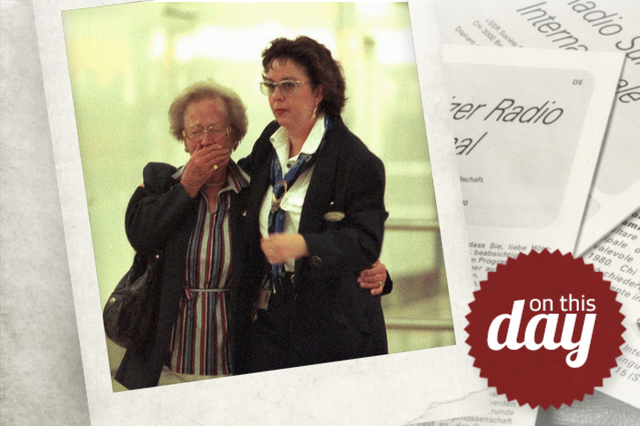
Swiss aviation’s worst air disaster remembered 25 years on

Today marks the 25th anniversary of the most serious accident in Swiss aviation history. The crash of a Swissair MD-11 near Halifax, Canada on September 2, 1998, killed all 229 people onboard.
Swissair flight 111 had taken off on schedule from John F. Kennedy Airport in New York for Geneva on that fateful Wednesday evening with 215 passengers and 14 crew members. The pilots first steered the plane towards Canada to cross the Atlantic.
About an hour after take-off, the crew noticed smoke in the cockpit. The altitude was too high for an emergency landing at Halifax airport. So the pilots made a loop to dump some fuel into the sea and then fly towards Halifax.

More
The Swissair flight 111 crash: causes and consequences
But then suddenly the electrical system failed. The pilots lost control of the plane and it crashed into the sea at Peggy’s Cove. All 229 people onboard died, including 49 Swiss nationals. The other passengers came from 43 nations.
Real care teams for the first time
The crash had consequences far beyond Switzerland. The McDonnell-Douglas MD-11 was a modern aircraft from Boeing. Swissair was one of the most renowned airlines in the world.
Care teams were deployed in Geneva, Zurich, Paris and New York to look after victims’ relatives. This was the first time that such large-scale care had been provided in an accident. “Before, hardly any attention was paid to the care of the bereaved,” Franz Bucher, who was part of the care team at the time, told Keystone-SDA news agency.
Short circuit as cause
The recovery of the aircraft took more than a year. Around 2 million aircraft parts were pulled out of the sea at the crash site. Together with 275km of cable, the aircraft was reconstructed and the search for the cause of the crash began.
It took four and a half years until the Canadian Transportation Safety Board (TSB) presented its investigation report in March 2003. According to the report, the accident was caused by a short circuit, probably triggered by a broken insulation of a copper cable.
The electrical sparks set fire to combustible insulating mats in the cockpit. There were no smoke detectors or extinguishing devices onboard the MD-11 at that time.
The cable was probably part of the onboard entertainment system that Swissair had retrofitted for first class. Swissair subsequently discontinued this system in its MD-11s and Boeing 747s. After inconsistencies emerged in the certification of this system, the operating licence for the onboard system was withdrawn.
Aircraft type withdrawn
The accident also had technical consequences: the Canadian and American aviation safety authorities issued more than 50 instructions, which led to the conversion and retrofitting of McDonnell Douglas aircraft, among other things with additional smoke detectors, extinguishing systems and infrared cameras.
Swissair, and later SWISS international airlines, repaired the safety deficiencies on this type of aircraft, replaced the insulation mats and initiated the retirement of the last 13 MD-11s.
In addition, new regulations and procedures were issued for the cockpit crew. Swiss changed the emergency checklist. After further accidents in the following years, supervision of Swiss aviation was also tightened.
Today, two memorials with monuments made of granite commemorate the Halifax tragedy on the rocky coast not far from Peggy’s Cove. Both monuments bear an inscription in English and French commemorating the victims and overlook the crash site out onto the Atlantic.
This news story has been written and carefully fact-checked by an external editorial team. At SWI swissinfo.ch we select the most relevant news for an international audience and use automatic translation tools such as DeepL to translate them into English. Providing you with automatically translated news gives us the time to write more in-depth articles. You can find them here.
If you want to know more about how we work, have a look here, and if you have feedback on this news story please write to english@swissinfo.ch.

In compliance with the JTI standards
More: SWI swissinfo.ch certified by the Journalism Trust Initiative





























You can find an overview of ongoing debates with our journalists here . Please join us!
If you want to start a conversation about a topic raised in this article or want to report factual errors, email us at english@swissinfo.ch.